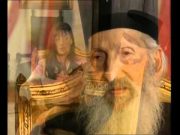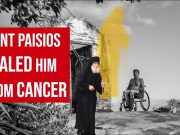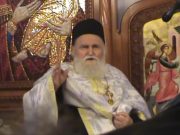In this recording, Archimandrite Athanasios Mytilinaios (1927-2006), answers the question: “Why didn’t Jesus appear more often after His resurrection? Why is Christ not living with His disciples after His Resurrection, but only appears to them a few times?” “It was necessary that the disciples – and through the disciples all men of history – should go from “sight” to faith.”
Audio source: “Catechism”, no. 528 (in Greek), October 18, 1992
Fr. Athanasios:
Let’s see a third question. “Why is Christ not living with His disciples after His Resurrection, but only appears [to them] a few times?”
First of all, the Lord appeared to His disciples to demonstrate [His] Resurrection. On the 40th day, He ascended. Consequently, they would not be able to see Him again with their eyes. It was necessary that the disciples – and through the disciples all men of history – should go from “sight” [«είδος»] to faith. Apostle Paul says, “For we walk by faith, not by sight.” [2 Corinthians 5:7] Meaning, we live, we exist not by sight. Meaning, we do not have the face of Christ. But, we walk by faith. Because the Lord would ascend to heaven and we would no longer have Him on earth all the time. As a result, the faith had to be developed. For this reason, He appears a few times throughout the 40 days in order to educate them [the disciples], by getting them from seeing Him every day before He was crucified and Resurrected to faith where they could no longer see Him. Thus, these 40 days are the borderline, the border between here, sight, that they could see Him, and there, faith, where they could no longer see Him. We have many cases, but I will give you a characteristic one before the time elapses.
When 7 disciples were at the Lake of Gennesaret and fishing, Someone [Jesus] was walking across the beach and tells them, “Children, have you any food?” [John 21:5]
They answered Him “No.”
Then, John says, “It is the Lord!” They did not recognize Him. As soon as Peter heard “It’s the Lord,” he put on his outer garment and plunged into the sea, longing to reach the Lord faster.
The ship [with the disciples] also arrived. Once they reached the shore, they saw a fish on a fire of coals. I skip some things because we do not have enough time.
He [Jesus] tells them, “Come and eat breakfast.” “Yet none of the disciples dared ask Him, “Who are You?” – knowing that it was the Lord.” [John 21:12]
Pay attention to this peculiar phrase. Nobody dared ask Him, “Who are You?” knowing that it was the Lord.
On the one hand, they know it is the Lord, on the other hand they want to ask, “Who are You?”
In the Gospel of Mark, Jesus appeared to two of them in the country, as Luke says in more detail, “in another form.” [Mark 16:12] They had not recognized Him.
This “another form” is the pedagogy, the ascesis to get them from the province of “sight” to faith.
For this, they know it is Christ, but at the same time they wanted to ask Him, but they did not dare ask: “Who are You?”
It follows that it’s a form of educating them in the province of faith.
This is the reason the Lord, after His Resurrection, does not live with the disciples, but appears a few times with them to get them from one province to another. Children, if one says, “If only I could see the Lord, what else is there to ask?” Let him never say it! Let him never say it! Do you know why? Since it is arrogance to ask it, if he says it too often… the Lord wants us to be in the province of faith.

 Română
Română



































